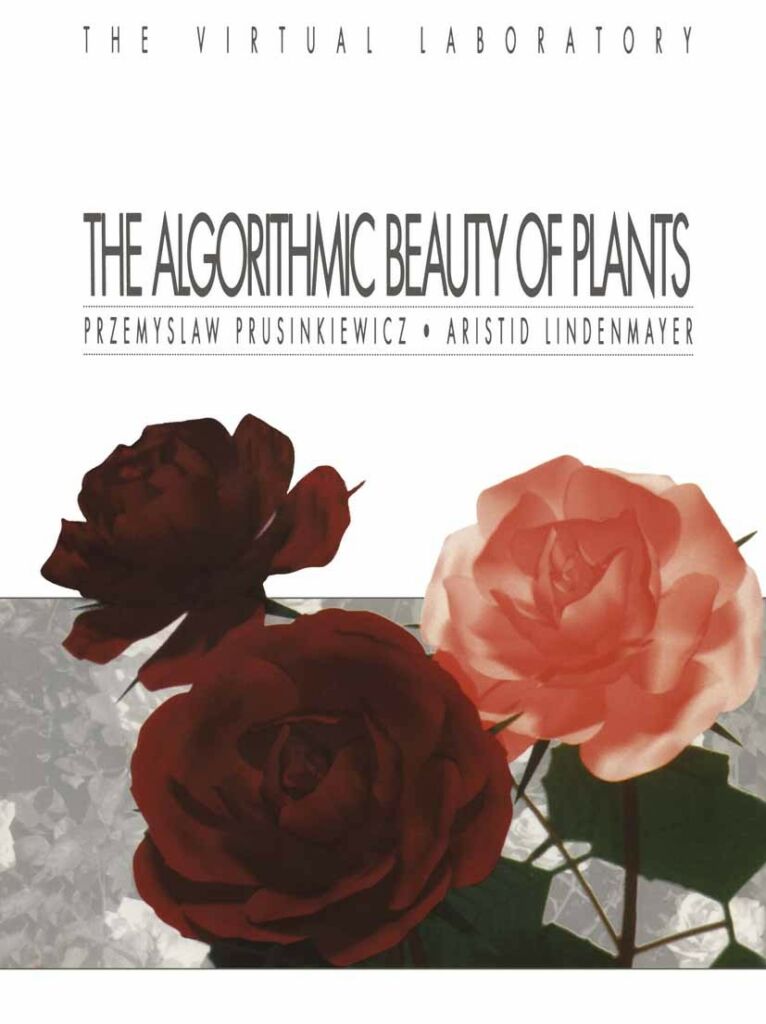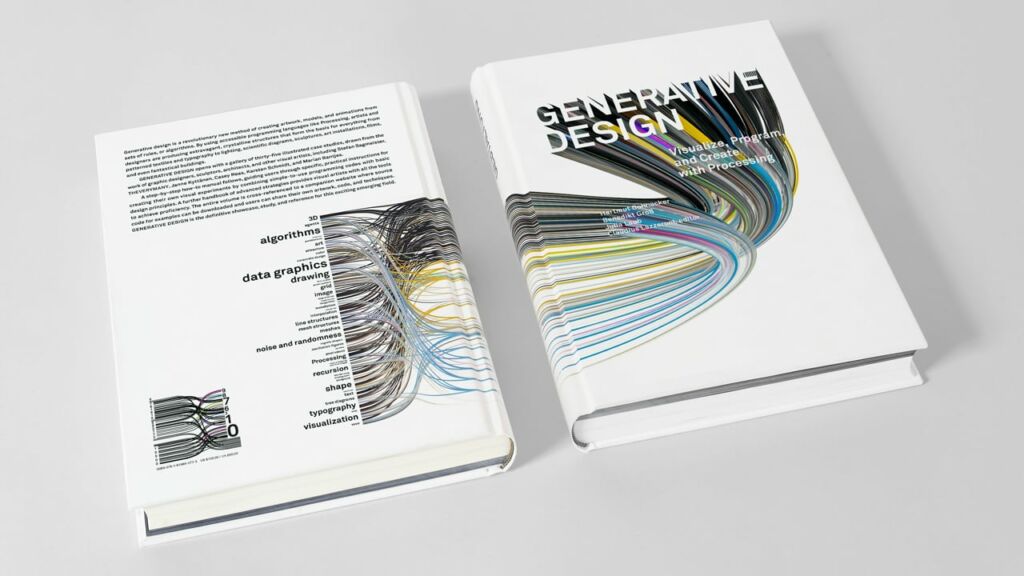Greetings, immersive media developers! In today’s post we will be exploring some generative design books. This is a short guide aimed at those intrigued by the intersection of technology and art. As you may know, generative art is the practice of having algorithms take on a more creative role than usual. It’s about creating something unique every time they run, and its rich history spans from mechanical origins to digital frontiers. This post is for everyone! Whether you’re just dipping your toes into generative art or looking for insights into its practices. We’re here to share a selection of books that shed light on this creative field! Let’s dive in and see what these books have to offer!
Historical Background
Generative art emerges from the intersection of technology and creativity, a concept that began to take shape with the advent of computers in art during the mid-20th century. This art form is all about creating systems or algorithms that can generate art, offering a blend of predictability and surprise in each output!
Artists like Vera Molnár and Manfred Mohr were among the first to delve into this realm. They used computers not just as tools, but as collaborators in the creative process. As you can imagine, this era marked a pivotal shift. It challenged traditional notions of the artist’s role and setting the stage for a new wave of digital creativity.
These initial experiments laid the foundational principles of generative art: the use of code (in all its forms) to create artworks that could evolve or repeat in unique ways. It was a move from the artist’s hand directly crafting the piece to designing the process that leads to the creation. This shift wasn’t just technological but philosophical, prompting a reevaluation of the creative act itself and fomenting a rich and evolving dialogue between the analytical and the aesthetic.
As technology advanced, so did the scope and complexity of generative art. From plotter drawings to intricate digital ecosystems, this field has expanded to include interactive installations, web-based environments, and AI-driven projects. Each leap in technology offered artists new tools to explore the dynamic relationship between creator, creation, and viewer.
Old School Generative Art
The early days of generative art were characterized by pioneering experimentation within the constraints of the available technology. Artists worked closely with computers, which at the time were primitive by today’s standards, to explore the artistic potential of algorithmic processes. This era was about pushing boundaries, both technologically and conceptually, as artists sought to understand and harness the creative possibilities of code.
Key figures in this movement didn’t just create art; they laid down the philosophical and practical foundations of generative art. Their work challenged viewers to reconsider the role of the artist and the nature of creativity in the age of digital reproduction. Books that delve into this period not only explore the technical advancements but also the conceptual breakthroughs that have shaped the understanding of digital art.
Recommendations
“The Algorithmic Beauty of Plants” by Przemyslaw Prusinkiewicz and Aristid Lindenmayer.

This book is fascinating! It explores the algorithmic processes in the growth of plants, presenting a blend of biology, art, and computer science. It’s a great example of early generative art principles applied to natural phenomena.
“Digital Harmony: On the Complementarity of Music and Visual Art” by John Whitney
John Whitney is a pioneer in digital art and animation. He explores the relationship between music and visual art through algorithms, offering insights into early digital creativity.

“Computer Graphics and Art” (various issues)
This series of periodicals from the late ’70s and early ’80s delves into the intersection of computer technology and art. It showcases early digital art works and discussions. Good to soak in imagery form earlier decades!

“Algorithmic Art: Computer Graphics and Art” by Herbert W. Franke
Franke’s work discusses the emergence of computer-generated art, offering an early theoretical framework and showcasing examples of algorithmic art.

Get Our 7 Core TouchDesigner Templates, FREE
We’re making our 7 core project file templates available – for free.
These templates shed light into the most useful and sometimes obtuse features of TouchDesigner.
They’re designed to be immediately applicable for the complete TouchDesigner beginner, while also providing inspiration for the advanced user.
Modern and Futuristic Generative Art
As we moved into the 21st century, the evolution of digital technology—especially the development of artificial intelligence and machine learning—has dramatically expanded the horizons of generative art. Today’s artists leverage sophisticated algorithms that can learn, adapt, and create in ways that were unimaginable to the pioneers of the field. This modern era of generative art blends science, technology, and aesthetics in new forms, from interactive installations to digital landscapes that respond to the viewer’s presence.
The literature on contemporary generative art is as diverse as the field itself, offering insights into cutting-edge techniques and the ever-blurring lines between creator and creation. These works not only showcase the technological prowess of modern generative art but also delve into its implications for future artistic practices, exploring how it challenges our perceptions of art, authorship, and creativity.
Recommendations
Generative Design: Visualize, Program, and Create with Processing by Hartmut Bohnacker, Benedikt Gross, Julia Laub, and Claudius Lazzeroni

This is a key contemporary resource that provides both a theoretical and practical guide to creating generative art using Processing. It’s become popular enough that you can find examples on how to implement the Processing code in TouchDesigner and many other platforms.
The Nature of Code: Simulating Natural Systems with Processing by Daniel Shiffman

Focusing on the programming side, this book teaches how to simulate natural systems using code. It’s relevant for artists interested in generative art that mimics or interacts with natural processes. It does a great job on additionally educating the reader on different concepts in physics and programming while continuing to explore natural systems.
Form+Code in Design, Art, and Architecture by Casey Reas, Chandler McWilliams, and LUST

A guide and inspiration book that explores the role of software in various creative fields, including art. It covers the history, theory, and practice of using code to create.
New Media Art by Mark Tribe and Reena Jana

While covering a broader range of new media practices, this book includes discussions on generative art within the context of contemporary digital art. It offers insights into its place within the wider art world.
Bonus Recommendations:
Beyond the pixels and algorithms of generative art, two foundational works offer timeless insights into design and color that are invaluable for any creative explorer:
- “Interaction of Color” by Josef Albers: Albers’ groundbreaking exploration of color theory is a must-read for artists and designers. This book delves into the complex nature of color relationships and their visual effects, providing a comprehensive foundation for understanding and applying color principles in any medium.

- “The Grammar of Ornament” by Owen Jones, revisited by Thomas Weil: A modern take on Jones’s classic compendium of global design principles and patterns. Weil’s revisitation introduces these timeless decorative elements to contemporary audiences, illustrating the vast potential for inspiration across cultures and epochs. This book is a treasure trove for those seeking to incorporate intricate patterns and historical design motifs into their work.

This last recommendation comes from our very own Crystal Jow! She’s made two TouchDesigner tutorials on the emulation of these ornaments and patterns. Here they are:
Wrap Up
As we conclude our exploration, remember the depth and diversity of learning that books offer. From the precision of algorithms to the foundational theories of design, each page offers a unique perspective for understanding and creativity. The tactile experience of reading provides a thoughtful pause, a quiet space for inspiration distinct from the digital whirlwind. This analog/digital blend, old and new, broadens our creative horizons! It encourages us to draw from a well of knowledge that spans centuries and technologies. Until next time, friends!